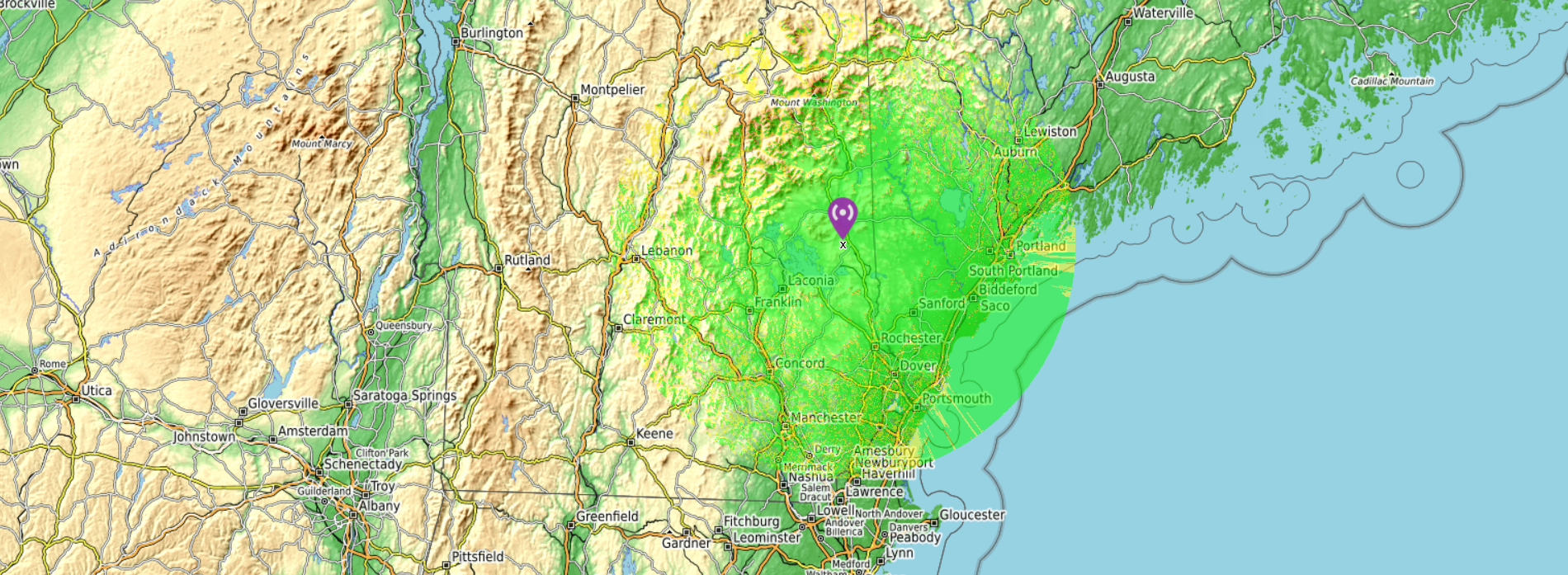W1BST 147.03
[NOTE: This page is no longer maintained or linked to our menu system but is retained for historical and SEO reasons. All information has been ported to other menu linked pages.]

W1BST 147.03 is a repeater located on Bennett Hill in Ossipee, NH
Input offset and access code are +600 kHz and PL=88.5
Controller: SCOM 7330
Repeater: Yaesu DR1X (with 85 watt amplifier, Advance Receiver Research pre-amp, isolator/circulator with harmonic filter)
Duplexers: Wacom WP-641 txrx, with pass cavities on tx and rx.
Antenna: Telewave 4 bay dipole (located at 115′ on the tower)
Echo Link
This repeater is hooked to an Echo Link connection:
Node number 875273, W1BST-R. More information can be found at the “Introducing EchoLink” web site. The intro states the following:
“EchoLink® software allows licensed Amateur Radio stations to communicate with one another over the Internet, using streaming-audio technology. The program allows worldwide connections to be made between stations, or from computer to station, greatly enhancing Amateur Radio’s communications capabilities. There are more than 350,000 validated users worldwide — in 159 of the world’s 193 nations — with about 6,000 online at any given time.”
Emergency Power
12 kW propane generator with about 5 days of fuel and 4 battery backup with 288 amp hours. If commercial power failure happens, the controller un-links the UHF and 6 meter repeaters and the amplifier powers down providing 20 watts of transmit output and notification on the ID tail including current battery voltage. W1BST 147-03
What is a Repeater and a Controller?
A repeater sits on a high point and is an automated radio station that extends the range of being able to talk on your radio. It consists of a receiver tuned to one frequency and a transmitter tuned to another frequency. They are all linked together with a controller device. The controller activates the transmitter when the receiver receives a signal. Then simultaneously re-transmits the received signal.
To use the repeater, a ham radio is configured to receive on the repeater’s transmitting frequency. When the push-to-talk button is pressed, the radio transmits on the repeater’s receiving frequency.
Repeaters are usually installed on top of building s, hills or mountains. And are equipped with an efficient antenna system that can take a weak signal and transmit it to a wider area. A repeater can take a ham operator’s low-power handheld radio and extend the range to a few miles or hundreds of miles.
Repeaters can be linked together to extend the range of communication even further. This is done with wires, radio links, phone connection, or the internet using digital audio technology.
The controller is the brain of the repeater. It handles station identification (through either CW or voice), activates the transmitter at the appropriate times, controls the autopatch, and sometimes does many other things. Some machines also have a DVR (Digital Voice Recorder) for announcements and messages. The controller is a little computer that’s programmed and optimized to control a repeater. The various models of controllers have different useful features like speed-dial for phone patches, a voice clock, facilities to control a remote base or linking, etc. The controller gives the repeater its ‘personality’. Whenever you’re using a repeater, you’re interacting with its controller. In the early days of repeaters the controller was a large chassis full of relays and timers. These days a controller is most often a microcomputer based unit.
